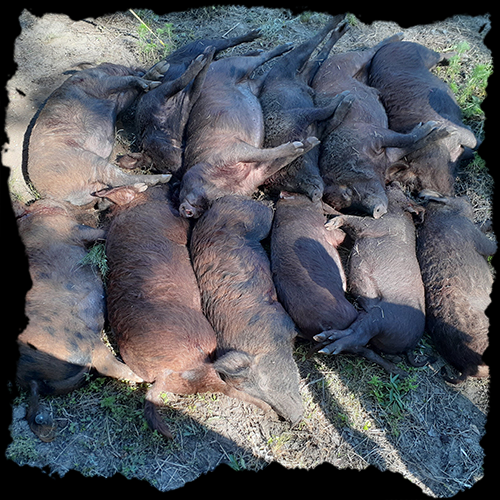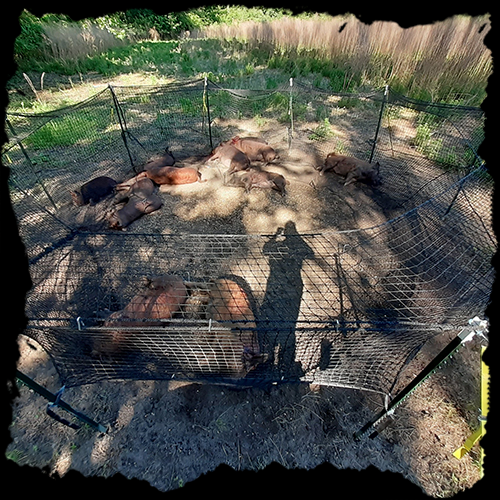About Feral Hogs
DISEASES
Feral hogs can carry and transmit a multitude of diseases to animals and humans. Three diseases that cause the most concern are brucellosis, pseudorabies, and tularemia. When handling hogs it is also to use latex gloves to avoid possibly contracting any of the diseases that hogs may carry. In order to prevent the spread of such diseases it is very important that you quickly get your hog population under control.

REPRODUCTION
Feral hogs can reproduce at an alarming rate. Females can reproduce approximately 4-7 piglets or more per litter and can have up to 2 litters within 15 months. Young hogs become sexually mature in about 6-9 months. Before you know it your hog population will grow out of control very quickly! To put things into perspective you would have to remove 75% of the current population to keep the hog numbers the same from year to year.

